Results 1 to 10 of 23
-
07-03-2014, 08:35 PM #1
 Escher/Thuringian Unique Wooden Box?
Escher/Thuringian Unique Wooden Box?
I bought a mystery hone on the Bay yesterday based solely off the wooden box. It may be a dud, but it was cheap enough I was willing to take a chance. The reason I purchased it was due to how the box end pieces are joined. They are not rabbet joints, but a rabbet dado which seems pretty unique in hone boxes. I may be wrong though and perhaps the rabbet dado was used all the time, but I guessed it was indicative of Thuringian/Escher type hones. The only real red flag about the hone I bought is the size is way too large for it not to be a one in a million chance. Here is a picture of the joint style I am talking about.
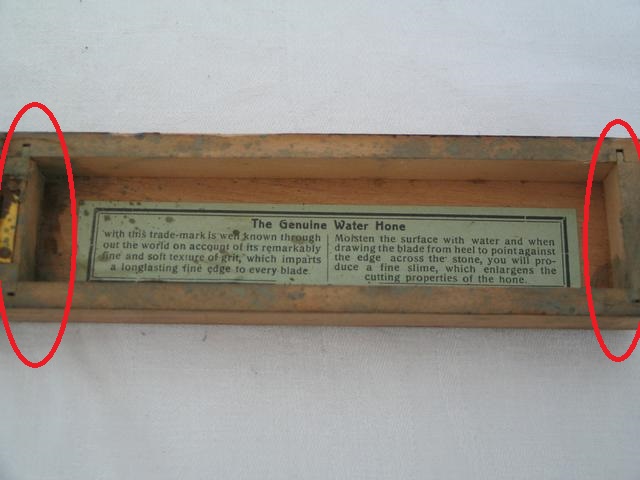
PS This may be a giant mistake in giving up a secret to figuring out mystery hone origins, but what the hey....Razor rich, but money poor. I should have diversified into Eschers!
-
07-03-2014, 08:43 PM #2

Nice box, now what ABOUT the hone?

-
07-03-2014, 08:51 PM #3

That was just an example of the joint style not the actual stone I bought. Here is the stone I bought:
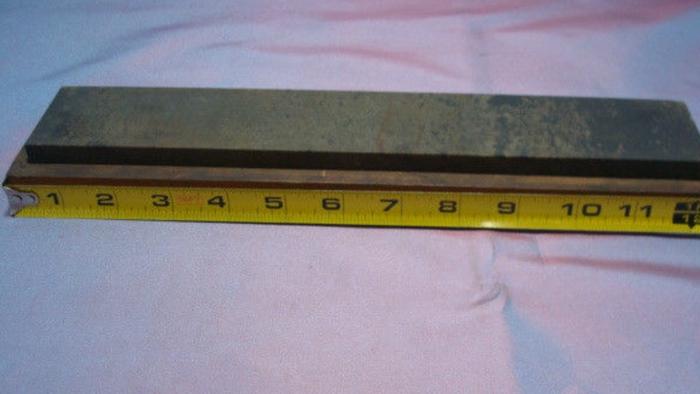
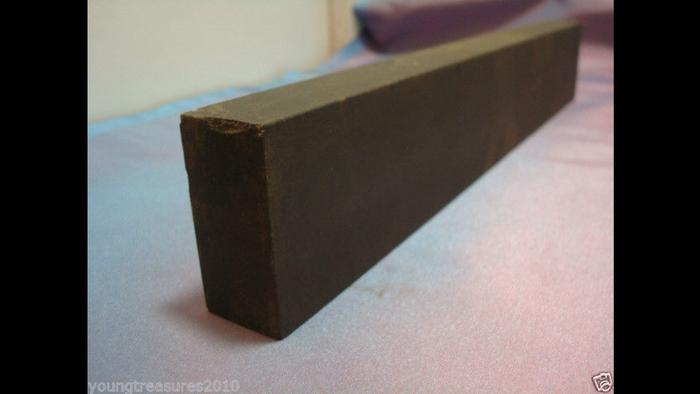
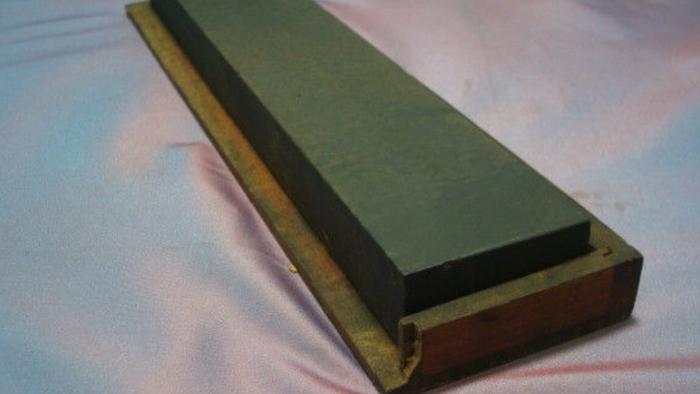
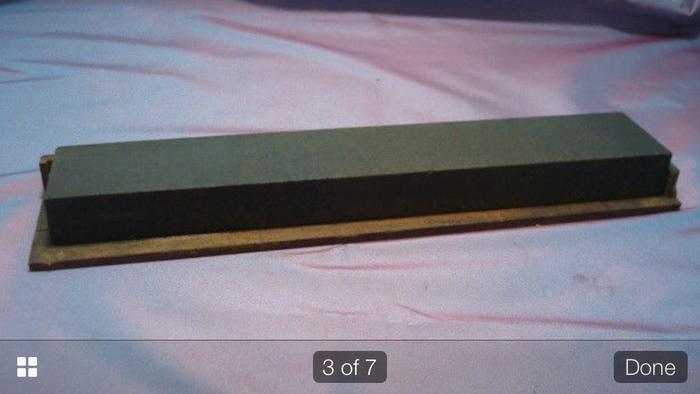
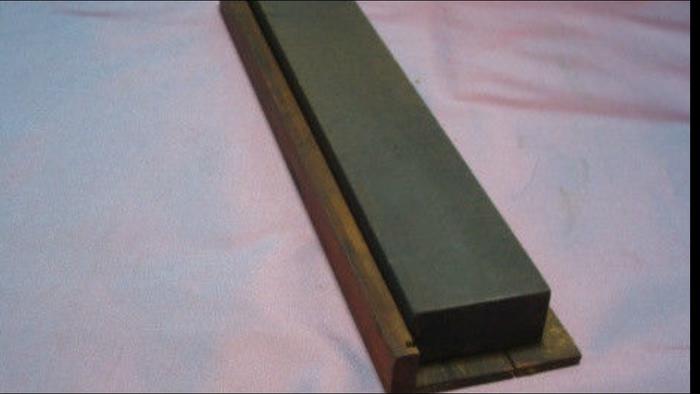
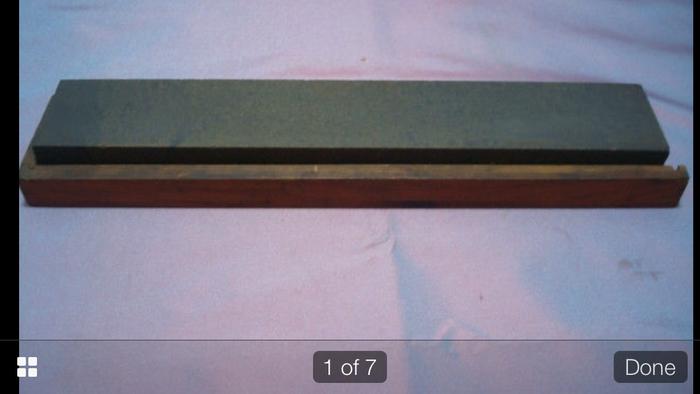 Razor rich, but money poor. I should have diversified into Eschers!
Razor rich, but money poor. I should have diversified into Eschers!
-
07-04-2014, 07:45 AM #4

As the box was only an example of the joint stile its quite difficult to evaluate here. I dont think it makes sense just to check the boxes or the style how they were made...
always focus on the stone + the boxes this is the better way....i also think that EBAY Pictures do the rest...HQ Pictures are always appreciated to identify a stone and still using HQ pictures it can be a long shot guess....
The stone itself from the pictures now do not look like a thuringian stone, from the the pattern on the first picture more like a Washita or a oil blasted synthethic stone.....so its just my first interpretation....
I would just wait until the package arrives and then post some HQ shots in daylight...Last edited by doorsch; 07-04-2014 at 07:49 AM.
-
07-04-2014, 08:23 AM #5

Speaking of the box joinery, one of the posts I saw yesterday showed a box quite similar to yours so I don't think that there is really anything different in yours.
-
07-04-2014, 02:22 PM #6Senior Member



- Join Date
- Apr 2008
- Location
- Essex, UK
- Posts
- 3,816
Thanked: 3164
I just checked 9 boxes - none of them were made the way your one is. Similar, but different - the smaller end pieces are indeed rebated into the longer edges, but there is no retaining tenon.
Interesting...
I used to collect old 1860s - 80s ambrotypes, tintypes, etc. The ones in cushioned leather boxes that opened up to reveal the photo were composed of a box made in a similar fashion - different dimensions of course. The leather and padding were put on later.
I recall seeing a series of drawings and pictures of one of the factories where this type of box was made (every photo supply company - similar to barber supplies with vast ranges of products in their books - had these boxes in different sizes) and the main thing about the box is that it was all glued up as a larger cube and could not be opened.
Once the glue was dry they had wafer thin but quite deep saw blades, and the cubes were passed down the line with the centre line facing the blade, so they were cut into two identical halves. It had never ocurred to me they were made like that before, and that whole mills were so geared up to producing one such product.
I am guessing that the boxes with the tenons were a later improvement - they would stay together better than the earlier ones with the short ends just rebated into the longer ends. They used mainly hot animal skin and bone glues, both of which soften up with prolonged wet times, then they dry again, crystalise and flake away. Sometimes no glue is left at all - except that holding the stone in the box, and the edges are very loose. A tenon would be a good idea in such a case...
Regards,
NeilLast edited by Neil Miller; 07-04-2014 at 02:33 PM.
-
The Following User Says Thank You to Neil Miller For This Useful Post:
Hirlau (07-13-2014)
-
07-04-2014, 02:44 PM #7

The label inside the lid is similar to what you may find with a generic Thuringian. However, the aspect of the stone is not what you would expect of a Thuringian.
Plus ça change, plus c'est la même chose. Jean-Baptiste Alphonse Karr.
-
07-04-2014, 02:54 PM #8Senior Member



- Join Date
- Apr 2012
- Location
- Diamond Bar, CA
- Posts
- 6,553
Thanked: 3215
Yup, that joinery style was commonly used for Ark stones. I have a few old Arks in similar boxes that I bought new, though it is a common factory style joint as it is quick and easy to make.
The first photo does look like an Ark, but the photos are not the best. Don’t know about the label, though it does not have the logos.
Hope I’m wrong.
I have wondered how long it would be until some no-goodnicks started making copies of Escher labels, not that this is the case here, but at the prices these stones are commanding…
I read a book recently where an art expert said, at least 25 percent of art paintings in museums are fakes, even higher percentage, in private collections.
-
07-04-2014, 03:08 PM #9Senior Member



- Join Date
- Apr 2008
- Location
- Essex, UK
- Posts
- 3,816
Thanked: 3164
I'm pretty sure that there were more than a few examples of fake escher labels posted here 6 or 7 yrs ago. I used to buy old military (WW1 and earlier) postcards at the time, and you saw a lot of fakes at fairs thanks to the new breed of colour printer. Some were very, very basic - horrible to behold, in fact.
There was a show on the tv a while back about fake paintings. They tested the white paint used in a painting acknowledged as the work of an old master, and found that the paint formulation, or rather the metal used for the white, was not in use in the old masters lifetime - it had not been found yet! So it had to be taken off the walls of the gallery, red faces all round.
There was a similar thing with small greek and egyptian gold idols - they were assumed to be solid gold, then someone found an odd bit of machinery. The acidic juice of a fruit was poured into it and it make a weak battery, weak but strong enough to thickly plate a base metal with gold. All the little figurines in a few egyptian museums were tested then, and they found quite a few plated ones. An old fake, but a fake nevertheless! (hmmm - sounds like my wife describing me - I think she said 'fake', but I might have been wrong...).
Regards,
Neil
-
07-04-2014, 03:25 PM #10

The Miami News - Google News Archive Search
An article on fakes discovered in a museum where I used to peruse the collection.Be careful how you treat people on your way up, you may meet them again on your way back down.


 3Likes
3Likes LinkBack URL
LinkBack URL About LinkBacks
About LinkBacks






 Reply With Quote
Reply With Quote
